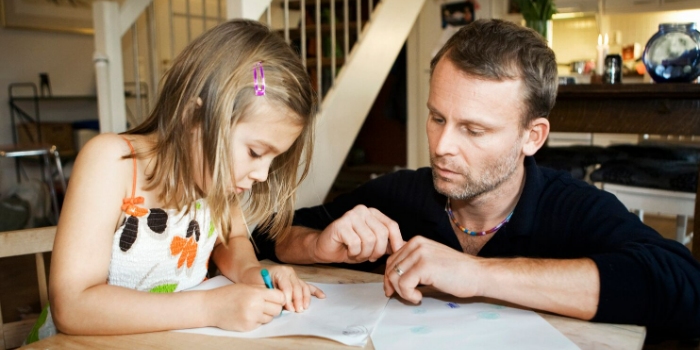How to create a ‘comfort kit’ with your child
Life can be full of unexpected changes. If you’re a parent, you might sometimes worry about how difficult events or big changes may impact your child.
We’ve created an animation for you to watch with them. It explains how children can make their own ‘comfort kit’. This is a collection of special and favourite items that they can use whenever they feel upset. Comfort kits or ‘self-soothe’ boxes are a great tool to use with children, but anyone can make one to help provide support with difficult emotions.

How a comfort kit works
Comfort kits contain sensory items that can help to distract, soothe or comfort children when they feel distressed. Self-soothing is a technique that can help children to manage difficult feelings, and regulate their emotions. After watching the animation below, you and your child may like to make a comfort kit together. The video below is intended for younger children.
I feel sad, I feel bad, I’m scared.
Hey, are you OK? You seem sad. Shall we make a comfort kit together?
What’s a comfort kit?
A comfort kit is a collection of your favourite things that comfort you when you feel sad, worried, angry or upset.
You’ll need a box or bag to put your favourite things in.
(gasps) I know just the thing!
But I don’t know what to put in it.
Try using things that are fun to look at, feel, smell or listen to.
I like my jungle colouring in book.
Great! Let’s put that in your comfort kit along with some colouring pencils too!
I want to put a picture of my family and friends in there as well.
Good idea. And remember, you can always ask them for help about anything that’s making you feel sad or bad.
I like looking at the colours and patterns in my Kaleidoscope.
WOAH
Me too! You’re getting the hang of this now. What else do you want to put in your comfort kit?
My cuddly toy is really soft.
Aw, I like this one. Every one should have a unicorn to cuddle.
I like the way these flowers smell.
What else should I put in my comfort kit?
What sounds do you like the best?
I know…
Hahahaha
Anything else you would like to put in?
Oh yes. I almost forgot.
I love bubbles.
I feel a bit better now. I’m going to do some colouring in.
Awesome!
What will you put in your comfort kit? Here are some more ideas.
Making your comfort kit
Comfort kits are simple to make and can be used quickly. They don’t have to be expensive either – they can often be filled with items you already have at home. It’s good to include things that have a focus on senses such as touch, smell, sight and hearing.
Here are some ideas that your child might like to put in their kit.
Touch
- soft blanket
- cuddly toy
- pom poms
- stress ball
- fidget spinner
Smell
- something that reminds them of you (maybe a t-shirt)
- flowers
- scented stickers
- bath bombs
Sight
- photos of favourite animals or people
- colouring book
- favourite book
- kaleidoscope
- snow globe
- bubbles
Sound
- headphones
- musical instrument
- favourite music
- sounds from nature
Even if your child isn’t feeling upset, you might notice them playing with an item they really like – you could suggest they include this in their kit.
Using the comfort kit
Next time your child is upset or distressed, try some of these conversation starters. They can help to remind your child that the comfort kit can help to soothe them.
- ‘I can see you’re feeling angry/upset/annoyed. Shall we get the box that you’ve made to look at this together?’
- ‘I will get your comfort kit for you and we can work out what is making you feel this angry/upset/annoyed/worried.’
- ‘Do you think spending some time going through your self-soothe box/comfort kit would be helpful right now?’
During times of change and uncertainty, we hope this kit can help your child to find some comfort.
We now offer GP appointments for children under 18. Find out more about our Under 18 GP Service, call us on 0330 822 3072.
About our health information
At Bupa we produce a wealth of free health information for you and your family. This is because we believe that trustworthy information is essential in helping you make better decisions about your health and wellbeing.
Our information has been awarded the PIF TICK for trustworthy health information. It also follows the principles of the The Information Standard.

More mental health and wellbeing articles
Did you find our advice helpful?
We’d love to hear what you think. Our short survey takes just a few minutes to complete and helps us to keep improving our healthy lifestyle articles.
Legal disclaimer
This information was published by Bupa's Health Content Team and is based on reputable sources of medical evidence. It has been reviewed by appropriate medical or clinical professionals and deemed accurate on the date of review. Photos are only for illustrative purposes and do not reflect every presentation of a condition.
Any information about a treatment or procedure is generic, and does not necessarily describe that treatment or procedure as delivered by Bupa or its associated providers.
The information contained on this page and in any third party websites referred to on this page is not intended nor implied to be a substitute for professional medical advice nor is it intended to be for medical diagnosis or treatment. Third party websites are not owned or controlled by Bupa and any individual may be able to access and post messages on them. Bupa is not responsible for the content or availability of these third party websites. We do not accept advertising on this page.







